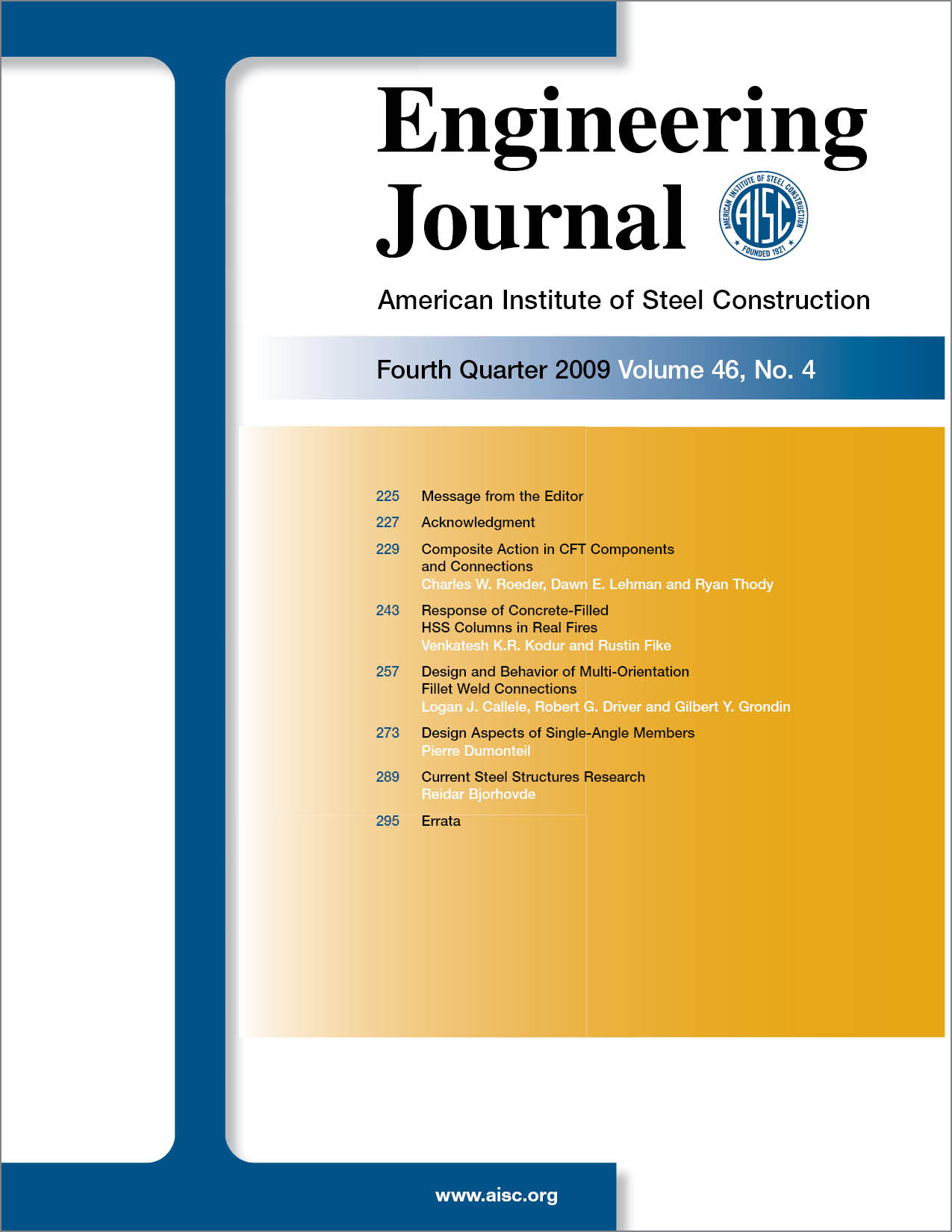Design and Behavior of Multi-Orientation Fillet Weld Connections
DOI:
https://doi.org/10.62913/engj.v46i4.965Keywords:
multi-orientation fillet welds, transverse welds, longitudinal welds, connections, steel constructionAbstract
Several independent research projects have demonstrated that the strength and ductility of fillet welds are a function of the angle between the weld axis and the line of action of the applied load. It has been demonstrated that transverse welds are about 50% stronger than longitudinal welds, but have considerably lower ductility. This difference in behavior can have a significant impact on the design of welded connections with multiple weld orientations within the same joint. Tests on concentrically loaded welded double lapped joints have recently been conducted to investigate the strength of connections with multiple weld segments of different orientations. The tests indicate that these joints possess capacities significantly lower than the sum of the individual weld segment strengths. The tested connections' capacities are a function of the interaction of the load versus deformation characteristics of the individual weld segments. A general approach for the design of welded joints that combine welds in various directions that reflects the individual segments' load versus deformation interaction is recommended.

